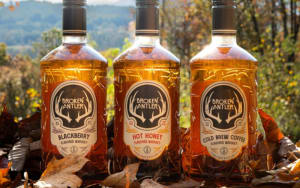For over seven decades, Maker’s Mark has been a household name in the world of bourbon, known for its smooth, wheated recipe and that iconic red wax seal. But in 2025, the Kentucky distillery is stepping into uncharted territory with the release of Star Hill Farm Whisky—a wheat whiskey that breaks away from its traditional bourbon roots. This marks the first time in the company’s 70-year history that it’s introduced a new mashbill, and it’s a move that’s already turning heads among whiskey lovers.
The new release, named after the sprawling 1,100-acre Star Hill Farm that surrounds the distillery in Loretto, Kentucky, isn’t just a tweak to the Maker’s Mark formula—it’s a completely different beast. While the distillery’s classic bourbon relies on a mix of 70 percent corn, 16 percent red winter wheat, and 14 percent malted barley, Star Hill Farm Whisky flips the script. This inaugural batch is a blend of two unique mashbills: one made with 70 percent soft red winter wheat and 30 percent malted barley, and the other crafted from 100 percent malted soft red winter wheat. The result? A final blend that clocks in at 61 percent wheat, 20 percent malted wheat, and 19 percent malted barley. Bottled at a robust cask strength of 57.35 percent ABV (114.7 proof), this whiskey brings a punch while staying true to wheat’s naturally soft character.
The journey to create Star Hill Farm Whisky started back in 2016 and 2017, when the components were distilled and laid down to age for seven to eight years. Unlike the bourbon that Maker’s Mark fans know so well, this wheat whiskey wasn’t babied with the usual barrel rotation process. Instead, the team let nature take the wheel. Around 60 percent of the 300-barrel batch matured in standard new charred oak barrels, while the remaining 40 percent aged in what the distillery calls “experimental vessels.” These included American oak, French oak, American-French hybrid barrels, and even grooved barrels designed to boost flavor by increasing the wood’s surface area. According to lead blender Beth Buckner, skipping the barrel rotation was a deliberate choice to let the natural environment shape the whiskey. “It’s like cooking with the best ingredients straight from the earth,” she explained. “We let the land and the barrels guide the flavor, then blended it all together to make something special.”
Master distiller Dr. Blake Layfield echoed that sentiment, emphasizing how this approach set Star Hill Farm apart from the distillery’s bourbon lineup. “We kept our usual process—same mill, mash, yeast, and fermentation—but then we switched things up,” he said. “No barrel rotation, plus a mix of different cask types, gave us a whiskey that’s totally its own thing.” That experimentation paid off with a flavor profile that stands out: sippers can expect buttery caramel and golden raisins on the nose, followed by honeyed toffee, apple pie spice, and a touch of minerality on the palate. The finish brings toasted pecans and a soft cinnamon warmth, making it bold yet approachable.
For Rob Samuels, the eighth-generation whiskey maker and grandson of Maker’s Mark founder Bill Samuels, this project was personal. He admitted that wheat whiskeys he’d tried in the past left him underwhelmed. “I tasted what was out there, and honestly, most of it didn’t impress me,” he said. “So we got to work figuring out what a wheat whiskey could be if we started from scratch with top-notch grains and a real focus on flavor.” The result, he believes, honors the distillery’s legacy while pushing it forward—a whiskey his grandfather would’ve toasted to.
Star Hill Farm Whisky isn’t just a new taste; it’s also a milestone for transparency and sustainability in the whiskey world. It’s the first spirit to earn certification from the Estate Whiskey Alliance, a group launched in 2023 by the University of Kentucky with Maker’s Mark as a founding member. To get this stamp, a whiskey has to be fully produced onsite—from milling to bottling—and at least two-thirds of the grains must come from land the distillery owns or controls. Layfield pointed out how this sets Maker’s Mark apart in an industry where some brands buy their juice from others. “With all the non-distiller producers popping up, people want to know where their whiskey’s really coming from,” he said. “This certification proves we’re doing it all right here, working hand-in-hand with farmers to grow the grains.”
Speaking of farming, Maker’s Mark is doubling down on its environmental commitment alongside this release. The distillery announced plans to help shift one million acres of farmland to regenerative practices over the next three years. That means healthier soil, more biodiversity, and lower carbon emissions—a big step for a brand that’s already spent decades stewarding its Kentucky home.
Visually, Star Hill Farm Whisky breaks from tradition too. Gone is the red wax seal that’s become synonymous with Maker’s Mark bourbon. Instead, the whiskey comes in a sleek, unique bottle that reflects its fresh identity. At $100 for a 750-milliliter bottle, it’s not cheap, but it’s priced to match its limited release status—just 300 barrels’ worth will hit shelves starting in May 2025. Fans in the U.S. and U.K. can snag it at select retailers, with Australia joining later in the year. For those near Loretto, booking a Star Hill Farm Whisky Experience at the distillery kicks off on Earth Day, April 22, offering a chance to grab a bottle onsite.
So, what’s next for Star Hill Farm Whisky? The team’s already hinting at tweaks for future annual releases—think different mashbills, cask types, or even grain varieties. “We’re still tasting what’s in the barrels, and it’s been eye-opening to see how the flavors keep evolving,” Layfield said. “This is just the beginning.” For a brand that’s spent nearly 75 years perfecting one recipe, this leap into wheat whiskey feels like a love letter to innovation—and a promise of more surprises to come.
Whether you’re a die-hard Maker’s Mark fan or just curious about wheat whiskey, Star Hill Farm is a chance to taste something new from a name you trust. It’s not bourbon, and it’s not trying to be. It’s a whiskey that’s all about the land it came from, the barrels it aged in, and the people who dared to shake things up.




